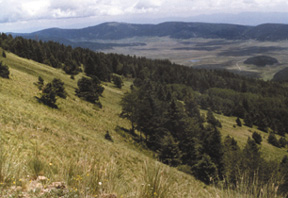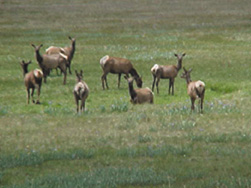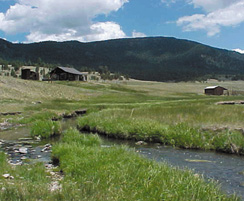On July 25, President Clinton signed a bill giving final approval to the federal purchase of the family-owned Baca Ranch for $101 million. Approximately 88,900 acres of the ranch has the new title of Valles Caldera National Preserve, while Bandelier National Monument picked up 823 acres from the ranch’s southeast corner. The bill also allowed the Pueblo of Santa Clara to purchase 5,045 acres to protect the upper watershed of the Santa Clara Creek, the pueblo’s water supply for drinking, irrigation and cultural purposes.

In the Jemez Mountains of New Mexico in the Valles Caldera
national Preserve will provide an outlet for visitors to explore
the geology of the southwest. Images courtesy of USDA Santa
Fe National Forest.


